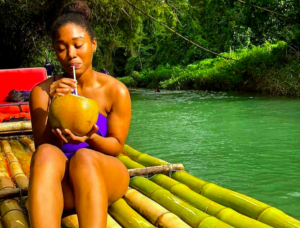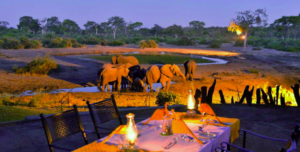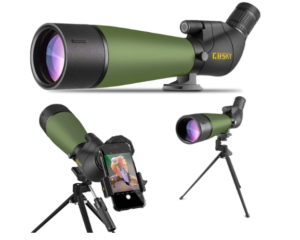
Best Scuba Diving Sites In Jamaica
Jamaica, with its sun-kissed beaches, lush jungles, and colourful culture, is both a tropical paradise above and below the waves. Under the surface of the blue Caribbean Sea, a totally new world comes to life when the sun sheds its golden rays. Welcome to Jamaica’s underwater wonderland, where scuba divers from all over the world come to discover coral gardens, fascinating tunnels, and a dazzling diversity of marine life. Scuba diving in Jamaica provides a unique opportunity to discover the Caribbean’s rich and diversified underwater ecosystem. Jamaica’s underwater wonders and friendly friendliness make it a fantastic destination for underwater aficionados, whether you’re a newbie or an experienced diver.
4 Best Scuba diving Sites In Jamaica.
1-Montego Bay Marine Park Scuba diving

Montego Bay Marine Park is one of Jamaica’s finest scuba diving locations, especially for beginners and intermediate divers. What you need to know about scuba diving at Montego Bay Marine Park is as follows:
Location:
Montego Bay Marine Park is located on Jamaica’s northwest coast, near Montego Bay, one of the country’s most renowned tourist attractions. The marine park protects numerous square km of underwater habitats.
Dive Sites:
There are multiple diving sites inside the marine park that appeal to divers of all ability levels. Among the most popular diving locations are:
Catherine’s Wheel:
This is a beginning diving spot with shallow water. It has vibrant coral formations, little sea life, and a sandy floor.
The House Reef:
House Reef, another beginner-friendly dive site, provides a tranquil and shallow dive experience with a diversity of coral and marine life.
The Greenhouse:
This location is well-known for its beautiful coral gardens, making it ideal for underwater photography and seeing marine life such as rays, eels, and tiny reef fish.
The Barracuda Reef:
With deeper waters and heavier currents, this is a more advanced dive destination. It is well-known for its big schools of barracuda and other larger fish.
Marine Life:
Divers at Montego Bay Marine Park may expect to see a wide variety of marine life, including colourful reef fish, sea turtles, stingrays, and many coral species. The park’s protected status contributes to the health and vitality of the maritime environment.
Visibility:
at general, visibility at Montego Bay Marine Park is excellent, sometimes surpassing 100 feet (30 metres). Because of the pure water, underwater visibility is good, making it easy to identify marine life and enjoy the coral formations.
Water Conditions:
The water temperature of Montego Bay Marine Park is warm all year, ranging from 77°F to 84°F (25°C to 29°C). The currents are typically mild, making it acceptable for divers of all levels of expertise.
Dive Operators:
In Montego Bay, there are various dive operators and dive shops that provide scuba diving services, equipment rental, and guided dives inside the marine park. These companies guarantee a safe and fun diving experience.
Certification:
If you are not a licenced diver, several dive shops in Montego Bay offer starting training, such as introduction dives and PADI certification courses.
Conservation:
Montego Bay maritime Park is committed to the protection and conservation of its maritime environment. Divers are advised to practise responsible diving by avoiding harming or injuring the coral and according to the park’s laws.
Scuba diving in Montego Bay Marine Park is an excellent method to discover Jamaica’s underwater splendour and the Caribbean’s diverse marine life. Whether you’re a beginner or a seasoned diver, the marine park has a dive location to fit your interests and ability level.
2- Negril Scuba diving

Scuba diving is a popular pastime in Negril, Jamaica, attracting divers from all over the world. Negril is well-known for its magnificent underwater landscapes, varied marine life, and a wide range of dive locations appropriate for divers of all skill levels. Negril is one of the Best Scuba diving Sites In Jamaica. Here’s what you need to know about Negril scuba diving:
Location: Negril is a vacation town on Jamaica’s western coast, in the parish of Westmoreland. It is a renowned tourist destination due to its beautiful beaches and bustling nightlife.
Dive Sites:
Negril has a variety of diving locations, each with its own distinct features. Among the well-known diving spots in the region are:
The Negril Wall:
This is one of Negril’s most famous diving spots, notable for its stunning underwater drop-off. The wall begins at around 40 feet (12 metres) and descends to depths of more than 100 feet (30 metres). Divers may explore the colourful coral formations, sponges, and marine life along the wall.
The Throne Room:
This is an amazing underwater cave system that is around 50 feet (15 metres) deep. It’s famous for its throne-like entrance, and expert divers may explore the caverns and tunnels inside.
The Rick’s Café:
Rick’s Café, while largely recognised as a popular pub and cliff-jumping location, also provides scuba diving options. Underwater rock formations and marine life abound in the seas surrounding Rick’s Café.
The Coral Gardens:
This location is great for novices and snorkelers. It’s a shallow, sheltered region teeming with coral formations and vibrant aquatic life. It’s a fantastic location for underwater photography.
Marine Life:
The seas around Negril are rich with marine life. Divers may expect to see parrotfish, angelfish, snapper, and moray eels, among other fish species. Larger species such as nurse sharks, rays, and sea turtles may also be seen.
Visibility:
Negril’s vision is normally exceptional, frequently surpassing 100 feet (30 metres). Clear waters give excellent conditions for underwater exploration and photography.
Water Conditions:
Because Negril has a tropical environment, water temperatures range from 77°F to 84°F (25°C to 29°C) all year. The currents are typically mild, making it acceptable for divers of all levels of expertise.
Dive Operators:
In Negril, there are various dive operators and dive shops that provide scuba diving services like as equipment rental, guided dives, and certification training for novices.
Scuba diving at Negril is an excellent way to experience the underwater splendour of Jamaica’s western coast. Whether you’re a beginner or an expert diver, Negril’s various dive locations and abundant marine life make it a popular destination.
3- Ocho Rios Scuba Diving

Scuba diving in Ocho Rios, Jamaica, is an exciting activity that allows divers to explore the Caribbean Sea’s unique marine life and underwater sceneries. Ocho Rios, on Jamaica’s northern coast, is a famous tourist resort with numerous good diving locations. What you need to know about scuba diving in Ocho Rios is as follows:
Location:
Ocho Rios is located on Jamaica’s northern coast in the parish of St. Ann. It is well-known for its beautiful scenery, waterfalls, and bright marine ecosystems.
Dive Sites:
Ocho Rios has a wide range of diving locations to suit divers of all skill levels. Among the prominent diving sites in the region are:
The Caves:
This is a well-known diving location in Ocho Rios. It has underwater caves and swim-throughs, as the name implies, and provides an exhilarating experience for intermediate and experienced divers.
The Devil’s Reef:
Devil’s Reef, a shallow dive location with depths ranging from 15 to 40 feet (4.5 to 12 metres), is ideal for novices. It has vibrant coral formations, sponges, and a diverse array of marine life.
The Chapel’s Gap:
Another renowned diving spot with underwater tunnels and canyons. It is appropriate for intermediate divers and provides an opportunity to investigate unique geological characteristics.
Sharkies Reef:
Despite its name, this dive location is about a varied diversity of marine life rather than sharks. Divers may come across reef fish, lobsters, and perhaps nurse sharks at this spot.
Marine Life:
The underwater environment of Ocho Rios is filled with marine life. Divers may expect to observe a variety of fish species such as angelfish, parrotfish, snappers, and groupers. Coral reefs also provide as a home for a variety of crustaceans and creatures. On rare occasions, divers may come across rays, eels, and marine turtles.
Visibility:
In general, the underwater visibility at Ocho Rios is exceptional, frequently topping 100 feet (30 metres). The crystal-clear water allows divers to fully experience the area’s undersea splendour.
Water Conditions:
Ocho Rios has a tropical environment, therefore water temperatures range from 77°F to 84°F (25°C to 29°C) all year. The currents are normally light, making it acceptable for divers of all skill levels.
Conservation:
Ocho Rios is dedicated to the preservation of its aquatic environment. Divers are advised to practise responsible diving, such as not touching or destroying the coral and respecting marine life.
Scuba diving in Ocho Rios is an excellent way to discover the underwater delights of Jamaica’s northern coast. Whether you’re a beginner or a seasoned diver, Ocho Rios’ numerous dive sites and abundant marine life make it a terrific location for underwater aficionados.
4- Port Antonio Scuba Diving

Scuba diving at Port Antonio, Jamaica, allows you to discover the island’s pristine underwater splendour on the island’s eastern coast. Port Antonio is famous for its beautiful terrain, tranquil atmosphere, and various marine habitats. Here’s all you need to know about diving in Port Antonio:
Location
Port Antonio is located on Jamaica’s northeastern coast in the parish of Portland. It is well-known for its natural beauty, which includes rainforests, waterfalls, and scenic beaches.
Dive Locations:
Port Antonio has a number of diving locations, each with its own distinct characteristics. Among the well-known diving spots in the region are:
The HMS Bacchante Wreck:
One of Port Antonio’s most recognised diving locations is the British Royal Navy shipwreck. The wreck is around 40 feet (12 metres) deep and is home to a variety of marine animals, including colourful corals and fish.
Dragon’s Mouth Cave:
Dragon’s Mouth Cave is an underwater cave system that provides a one-of-a-kind diving experience. Divers can explore its tunnels and corridors, which are frequently lighted by natural light shafts.
The Coral Gardens:
This attraction, as the name indicates, contains bright coral gardens rich with marine life. It’s a great place for underwater photography and interactions with reef fish, eels, and lobsters.
The Barracuda Reef:
This location is well-known for its large schools of barracuda and other pelagic species. It is a more difficult dive location, with deeper waters and stronger currents.
Marine Life:
The seas around Port Antonio are teeming with aquatic life. Divers may expect to see a wide variety of fish, including parrotfish, angelfish, snapper, and groupers. Coral reefs are home to a variety of invertebrates and creatures. Larger marine species such as nurse sharks, rays, and sea turtles are also sighted on occasion.
Visibility
Port Antonio’s underwater visibility is normally exceptional, frequently topping 100 feet (30 metres). Clear seas offer ideal conditions for exploring underwater landscapes and watching marine life.
Water Conditions:
Port Antonio has a tropical environment, therefore water temperatures range from 77°F to 84°F (25°C to 29°C) all year. The currents are normally mild to moderate, making it appropriate for divers of all levels of expertise.
Conservation:
Port Antonio is dedicated to preserving and protecting its maritime environment. Divers are advised to practise responsible diving, such as not touching or destroying the coral and respecting marine life.
Scuba diving at Port Antonio offers a once-in-a-lifetime opportunity to discover Jamaica’s lesser-known underwater beauties. Whether you’re a novice or an experienced diver, Port Antonio’s various dive sites and abundant marine life make it an appealing destination for underwater aficionados.
FAQs
Is scuba diving popular in Jamaica?
Scuba diving is a popular pastime in Jamaica because of the warm, clear seas, teeming marine life, and different dive spots.
When is the best time to dive in Jamaica?
Because of Jamaica’s tropical environment, scuba diving is available all year. However, the peak diving season normally lasts from November to mid-December and from mid-January to April, when the weather is at its best.
Is a scuba diving certification required in Jamaica?
While certification is not necessarily necessary for beginner dives, it is strongly advised that you obtain certification before diving alone. Certification classes are available at several diving shops and resorts in Jamaica.
How much does scuba diving in Jamaica cost?
The cost of scuba diving in Jamaica varies based on location, dive site, equipment rental, and whether you take a guided dive or a certification course. Expect to pay between $50 to $150 or more each dive.
Are there any diving locations in Jamaica that are good for beginners?
Yes, Jamaica has several dive spots that are suited for novices, such as shallow reefs and calm seas. Beginner divers will like the Montego Bay Marine Park and Negril.
What should I look forward to seeing while scuba diving in Jamaica?
Colourful coral formations, reef fish, sea turtles, rays, nurse sharks, and other marine life may be found in Jamaica’s seas.
Is it possible to have a shark encounter when diving in Jamaica?
While it is possible to come across nurse sharks when diving in Jamaica, they are normally gentle and pose little threat to divers. Encounters with bigger shark species are uncommon.
What is the visibility like in Jamaica’s waters?
The visibility in Jamaican seas is usually great, frequently surpassing 100 feet (30 metres). The pure water provides for good underwater vision.
Is scuba diving safe in Jamaica?
Scuba diving in Jamaica is typically safe when done with qualified dive operators that follow safety regulations. Make careful you dive within your ability level and experience.
What are some of the most popular scuba diving spots in Jamaica?
Montego Bay, Negril, Ocho Rios, Port Antonio, and the surrounding surroundings are popular scuba diving sites in Jamaica. Each provides a distinct underwater experience.
Is underwater photography popular in Jamaica?
Yes, because of its colourful coral reefs and varied marine life, underwater photography is a popular hobby in Jamaica. Many divers use underwater cameras to document their adventures.
What is the state of conservation of Jamaica’s reefs?
Jamaica’s coral reefs and marine habitats are being protected and conserved. Divers are advised to use responsible diving practises to reduce their environmental effect.
Remember that information and conditions might change, so it’s best to verify with local diving operators and authorities for the most up-to-date information.
Related






